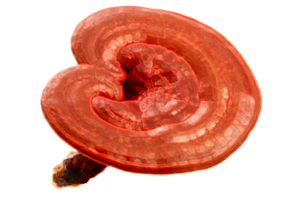Farghali H, Masek K
Abstract
A number of immunomodulating agents of different origin have been shown to reduce liver injury of various etiologies. Immunostimulants like levamisole, BCG, a protein polysaccharide from myceria Coriolus vesicolor PS-K, a streptoccocal preparation OK-432 and immunomodulators like N-acetylmuramyl-L-alanyl-D-isoglutamine (MDP) and its analogs. Selective T-cell suppressors like the polypeptide cyclosporine A (CsA) and the macrolide FK 506 (tacrolimus) have also been claimed to possess hepatoprotrophic or hepatoprotective properties at low doses. The aim of this review article is to highlight the interplay between the administration of immunomodulating agents and the amelioration of hepatic injuries. Hepatic effects of exogenous immunomodulators are discussed with special focus on the most widely used immunosuppressive agents, CsA and tacrolimus. An important question exists as to whether these potential hepatoprotective effects are related mechanistically to the immune system or are working at different levels. Due to the differences in effects and modes of actions of various immunoactive substances presented herein, a common mechanism for their cytoprotective effects cannot be formulated at this stage. Levamisole and cyanidanol may protect cells against necrosis by acting as free radical scavengers. MDP and its analogs reduce carbon tetrachloride-elevated (CCl4) lipid peroxides and their protective effects are primarily on hepatic cytoplasmic membranes where lipid peroxidation and calcium homeostasis interact. MDP reduced CCl4-elevated calcium in both intact hepatocytes and in the post microsomal supernatant suggest that the influx of extracellular calcium across plasma membrane is affected. Elevations of intracellular calcium above a threshold are involved in: the stimulation of Ca2+-sensitive enzymes such as phospholipase A2, endonucleases and proteases, the conversion of xanthine dehydrogenase to xanthine oxidase and the formation of free radicals, all of which disturb biomembranes. MDP and its analogs, in a specific dose range, may act to maintain intracellular calcium within physiological ranges. Highly complex cellular signalling systems, including calcium, are involved in the explanation of the mechanism of the immunosuppressive effect of CsA and tacrolimus. The hepatoprotective effects of these selective immunosuppressive agents, however, are independent of the inhibition of T-cell activation. The cyclophilin and tacrolimus binding proteins of the mitochondria are the receptors for these compounds and play a key role in the regulation of mitochondrial permeability transition pores. CsA or tacrolimus inhibition of mitochondrial permeability transition pores does not require interaction with calcineurin, indicating a dissociation between immunosuppression and mitochondrial protection. The involvement of intracellular or intramitochondrial proteins in the modulation of mitochondrial permeability transition pores with the creation of a partially impermeable state for Ca2+ movement in drug-treated mitochondria and the dissociation of this effect from immunomodulatory actions potentially offers new and promising approaches for the development of new pharmacologicals targeted at therapeutic intervention. Clinical trials of these drugs as hepatoprotective agents are limited. Use of CsA in patients with primary biliary cirrhosis and autoimmune chronic hepatitis and in cirrhotic animal models produced by chronic administration of CCl4 have yielded encouraging results. It seems that this class of compounds may be of substantial benefit in liver protection against many pathological conditions where disturbance in mitochondrial function and in Ca2+ homeostasis appear to be prerequisites for cell injury.
Reference:
Int J Immunopharmacol. 1998 Apr-May;20(4-5):125-39


